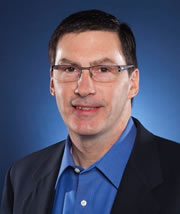Moving Towards a Flexible Grid
By David Brochu, ISEA Board Member and Secretary
The electric power grid is an incredible feat of engineering. It connects thousands of generators to millions of customers, reliably delivering electricity to our homes, businesses, and critical infrastructure – flowing energy, from centralized generating resources such as coal plants, wind farms, nuclear and solar power plants. We take this nearly century-old system for granted and it rarely factors into conversations about how best to build a clean energy future. But this is a mistake.
A Gallup poll from April 2013 found that three-in-four Americans want the United States to pursue more solar energy and another 71 percent favor further development of wind power. Achieving a clean energy future will require modifying the current grid to be “flexible” so that it can accommodate more solar, wind, storage, and demand-side resources. Moving to a “flexible” grid means moving our existing grid infrastructure from the centralized generating resource model to a decentralized model – meaning a grid that optimally aligns energy consumers and generators, utilizing variable clean resources like solar and wind. Americans are already moving forward by installing solar on their homes and calling for further development of wind power. We’ve been moving forward towards our clean energy future, while the grid is not set up to utilize the power being generated most efficiently.
Historically, the reasons given for not pursuing higher levels of renewables are two-fold: cost and reliability. With regards to cost, renewables have made significant progress such that solar is now able to compete in Texas’ deregulated ERCOT market. In fact, across the country there are numerous examples of utilities requesting approval from their regulators to purchase wind and solar on the basis of economics rather than policy. More so, renewable energy isn’t subject to the volatile pricing that fuel based energy sources are, such as coal and natural gas, making more attractive to utilities and offtakers across the country.
On the reliability front, we have seen in practice that markets with a higher percent of renewable generation like CAISO are indeed able to ensure reliability and balance variability from renewables while preventing overgeneration, even with one fifth of the system’s power currently coming from renewables. While variable renewable resources of around 20% are shown to operate successfully, in order to move forward the grid will need to be more flexible to accommodate energy flowing two ways, from more sources, and with a higher percentage of variable resources. We are also now seeing IOUs stepping forward, after a 30 year hiatus, to invest in new infrastructure to address the coming waves of renewable generation and to address aging resources and the ability to remain resilient during natural disasters. As we reinvest in the old infrastructure, doesn’t it make sense to further strengthen our grid and ensure accommodation of more variable resources?
Investing in a “flexible grid” – one that can enable dynamic, two-way variable power flow and connect devices for dispatch and performance measurement - is critical for affordably and reliably integrating high levels of clean energy resources. Some examples of infrastructure that enables grid flexibility include technologies like energy storage and smart inverters; demand-side tools to help system operators to better reduce, forecast and control overall load; markets that value flexible generation capable of ramping up and down quickly; and more efficient regional integration. These flexibility resources will allow us to affordably and reliably deploy more renewable generation.
Building a flexible grid won’t happen overnight. These updates to our grid system will be incremental and will involve technical, market, and regulatory complexities. But there’s no time like the present. The majority of Americans want a clean energy future, and a flexible grid is key to achieving it.
About David Brochu

David Brochu is the Chief Operating Officer of Recurrent Energy, leading all project development, engineering, procurement, construction, operations and origination activities. Before assuming the role of Chief Operating Officer in June 2014, he served as Recurrent Energy’s Senior Vice President of Development for four years, where he oversaw all development activities. Prior to Recurrent Energy, David was President and CEO of UPC Solar, a Chicago-based solar PV developer with a pipeline of projects in Ontario, Canada and the United States.
His past experience includes Vice President of Sales and Marketing at SmartSignal Corporation (now a GE Company), where he negotiated turbine and power plant monitoring agreements with major US utilities; Executive Vice President at Acumence, a business intelligence software company; and Director of Sales at Wonderware Corporation, a leader in industrial automation software.
He graduated with a Bachelor of Science degree in Mechanical Engineering from Texas A&M University in 1985, and earned a Masters of Science in Mechanical Engineering from Stanford University in 1986.